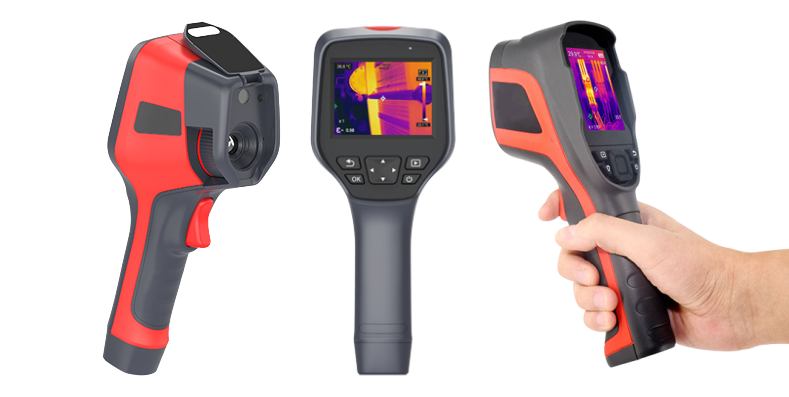Imagine a construction worker exposed to 95 dB of jackhammer noise daily—15 minutes at this level can trigger permanent hearing damage. With 22 million U.S. workers facing hazardous noise annually and the global sound level meter market projected to hit $1.7 billion by 2033, mastering these devices isn’t just technical skill—it’s a legal and ethical imperative. Noise level meters (NLMs) bridge the gap between invisible sound waves and actionable data, enabling industries to prevent noise-induced hearing loss (NIHL), which affects 12% of the U.S. workforce. This guide delivers a field-tested protocol for wielding NLMs like an acoustics expert.
What is a Noise Level Meter? The Science Behind the Silence
A noise level meter (NLM) or sound level meter (SLM) is a precision instrument that quantifies sound pressure levels (SPL) in decibels (dB), reflecting human auditory perception. Unlike basic microphones, NLMs apply frequency weighting and time averaging to convert raw acoustic pressure into standardized metrics.
Core Components & Technologies:
Microphone: Captures sound waves (condenser mics dominate professional models) and converts them to electrical signals. High-end NLMs use phase-matched arrays for directional accuracy.
Weighting Filters:
A-weighting (dBA): Mirrors human ear sensitivity, critical for occupational/environmental noise. *Example: 85 dBA = OSHA’s 8-hour exposure limit*.
C-weighting (dBC): Measures low-frequency noise (e.g., engines, explosions).
Z-weighting (dBZ): Flat response for unfiltered analysis.
Time Weighting:
Fast (125ms): For transient sounds (e.g., gunshots).
Slow (1s): Steady-state noise averaging (e.g., factory floors).
Accuracy Classes (IEC 61672):
Class 1: Precision-grade (±0.7 dB error). Used for regulatory compliance, labs.
Class 2: General-purpose (±1.5 dB error). Common in industrial/construction sites.
Advanced NLMs like Stanlay’s models integrate octave band analysis, Bluetooth data logging, and AI-driven pattern recognition to identify noise sources (e.g., bearing wear in motors).
Step-by-Step Guide to Using a Noise Level Meter
Step 1: Pre-Measurement Setup
Calibrate Religiously:
Attach an acoustic calibrator (e.g., 114 dB @ 1 kHz) to the microphone. Why? Temperature shifts cause drift—pre-use calibration reduces errors by ±0.3 dB. Stanlay’s devices auto-flag calibration drift.Configure Settings:
Select dBA for occupational/environmental noise.
Choose Slow response for stable readings.
Enable octave bands if diagnosing frequency-specific issues (e.g., HVAC rumble).
Positioning Protocol:
Hold the NLM 1.5 meters above ground (simulates ear height).
Angle the mic 0–90° toward the noise source.
Maintain >3.5m clearance from walls to avoid reflections.
Step 2: Conducting Measurements
Short-Term Spot Checks:
For machinery noise (e.g., pumps, compressors):Position the meter 1 meter from the source.
Take three 1-minute readings during peak operation.
Calculate the average (e.g., 92.3 dBA).
Long-Term Monitoring:
Use dosimeters or NLMs with logging (e.g., Larson Davis Model 831). Deploy tripods for stability. Pro Tip: Record Leq (Equivalent Continuous Level) for OSHA’s time-weighted averages.Environmental Surveys:
Measure at day/night intervals (e.g., 55 dBA daytime max per EU Directive).
Note wind speed (cancel if >5 m/s) and temperature—cold air amplifies high frequencies.
Step 3: Data Analysis & Troubleshooting
Interpretation Guidelines:
<70 dBA: Safe indefinite exposure.
85–90 dBA: Require hearing protection (OSHA action level).
>100 dBA: Damage within 15 minutes (e.g., chainsaws = 110 dBA).
Troubleshooting Errors:
Issue Cause Fix Inconsistent data Reflections/body interference Use tripod; wear non-reflective gear Low readings Microphone obstruction Clean mic grid with isopropyl alcohol Wind noise Turbulence Attach foam windscreen
Step 4: Reporting & Action
Export data via Bluetooth/USB to software (e.g., NoiseTools for Cirrus devices).
Generate compliance reports highlighting:
Lmax/Lmin peaks.
Daily noise dose % (OSHA/NIOSH metrics).
Implement controls: Soundproof barriers (>10 dB reduction) or schedule rotation for high-exposure tasks.
Top 3 Noise Level Meter Manufacturers (2025 Benchmark)
1. Stanlay (India)
Flagship Model: ST-407 Industrial NLM
Key Features: IP65 ruggedness, octave band analysis, 32GB storage.
Innovation: AI-based noise source identification via spectral mapping.
Best For: Construction sites, manufacturing plants in harsh environments.
2. Larson Davis (USA - PCB Piezotronics)
Flagship Model: Model 831+
Key Features: Class 1 accuracy, 1/3-octave real-time FFT, ANSI S1.4 compliance.
Innovation: Cloud-sync for live dashboards in smart factories.
Best For: Regulatory enforcement, aerospace/acoustic labs.
3. Cirrus Research (UK)
Flagship Model: Optimus+ Red
Key Features: Dual-channel input, 5.7" color touchscreen, GPS tagging.
Innovation: AI-powered "Noise Assistant" for predictive maintenance alerts.
Best For: Environmental agencies, urban noise mapping.
Table: Manufacturer Comparison
| Parameter | Stanlay ST-407 | Larson Davis 831+ | Cirrus Optimus+ Red |
|---|---|---|---|
| Accuracy Class | Class 2 (±1.4 dB) | Class 1 (±0.7 dB) | Class 1 (±0.9 dB) |
| Data Logging | 32 GB internal | 100,000 readings | Cloud + 16 GB SD |
| Environmental IP | IP65 (dust/water) | IP52 (splash-proof) | IP55 (jet-resistant) |
| Price Range | $800–$1,200 | $2,500–$4,000 | $3,000–$5,500 |
Conclusion: Turning Down the Volume on Risk
Noise level meters transform subjective sound into actionable intelligence—whether shielding a factory worker from tinnitus or a city dweller from sleep-disrupting traffic. As regulations tighten (e.g., FAA’s $200M/year noise mitigation fund) and AI revolutionizes predictive acoustics, NLMs evolve from compliance tools to strategic assets. The path forward is clear: Calibrate rigorously. Measure precisely. Act decisively. Investing in advanced NLMs like Stanlay’s AI-enabled systems isn’t just regulatory due diligence; it’s a commitment to human well-being in an increasingly clamorous world.



No comments:
Post a Comment